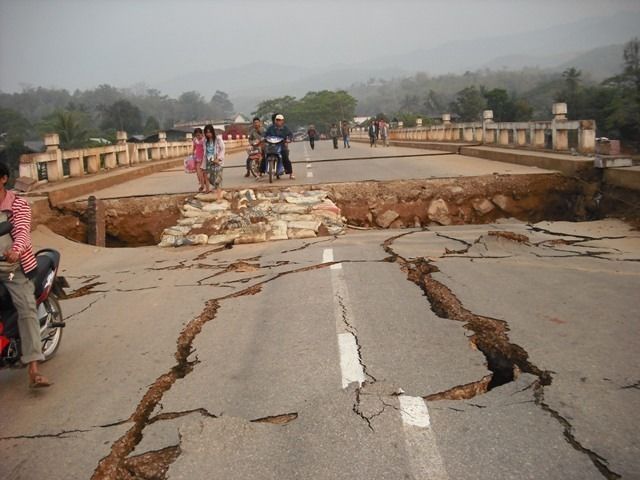© This article is an extract from Paul Hattaway's epic 656-page China’s Book of Martyrs, which profiles more than 1,000 Christian martyrs in China since AD 845, accompanied by over 500 photos. You can order this or many other China books and e-books here.
1785 - Antonio Sacconi & Francesco Magni
Francesco Magni and Antonio Sacconi were two of the martyrs of the persecution of 1784-85. Magni was the Bishop of Shaanxi (which also included Shanxi Province under its jurisdiction) until 1777. Sacconi succeeded him.
On December 18, 1784, the officials of Hunyuan County in the far north of Shanxi arrested a group of Christians and held them in prison under horrific conditions. The authorities searched vigorously for missionaries throughout other parts of the province. Some of the believers in Shaanxi, under torture, provided the names of several missionaries—including a bishop—who had been hiding in Shanxi for years. By the end of March, 1785, 65 Chinese believers remained in dire prisons awaiting sentence.
Francesco Maria Magni was born in Dervio, Italy, in 1723. Descended from a noble family, he arrived in China in 1762 and was later named Vicar Apostolic of Shaanxi, a role he held until 1777. Antonio Maria Sacconi succeeded Magni as Vicar Apostolic of Shaanxi. Born in the Italian town of Osimo in 1741, Sacconi had been a missionary in China since 1773.[I] When the persecution commenced Sacconi was at Taiyuan in Shanxi Province. He hid on the property of Fan Tianbo, a trusted Christian and friend. When the bishop heard that the government had arrested a group of Chinese believers in order to lure him out of his location,
“…he decided to leave his hiding place and to give himself up to the authorities. On the day before Christmas 1784 he prepared a little bundle of personal belongings and went alone to the city to present himself at the yamen [official residence] of the governor…. The bishop said that only his love of the Chinese people had prompted him to leave his native country and come to China, where he had lived for many years teaching others the way of salvation and exhorting them to embrace a religion in which alone they could hope to gain eternal happiness.”[II]
Sacconi spoke and read Chinese fluently, which helped the officials understand that the true motive of the Catholics was to serve the people and not to spy for their respective governments. The bishop told them “that he would be ready to suffer in his own person any punishment, but asked that the Chinese Christians be set free since they had committed no crime.”[III]
The officials came to see the situation in its true light and removed the heavy chains that Sacconi, Magni, and some of the prisoners had worn for months. The governor explained that he did not have the power to release the men, however, as the order for their arrest had come from the emperor in Beijing, and to disobey his orders would result in his own death. The translation of the official imperial edict documenting Sacconi’s case stated that he
“…has been in Shanxi for many years propagating his religion. Seeing that, at this time, the arrests were pushed with great vigour, and that his speech and features made it easy [for the officials] to recognize him and for himself difficult to slip through the net, his real intention was to escape secretly. When he was arrested, he pretended to surrender voluntarily in the hope of lightening his punishment. Naturally, he must be sent to the Capital to be tried.”[IV]
The two bishops were sent on the long overland journey to Beijing for trial. After weeks of travelling over bumpy roads, confined inside cages like wild animals and jeered at and reviled by crowds at each town they passed along the way, Magni and Sacconi arrived at the nation’s capital and were thrown into a filthy prison, along with 51 other Catholic leaders who had been rounded up from throughout the country. Their condition was described as “wretched and pitiful. As a result of the unhygienic state of the prisons and the lack of food, most of them fell sick. Before the trial was completed ten of the 53 prisoners had died.”[V] Among the ten who agonizingly perished were the two Italian bishops, Magni and Sacconi. Sacconi perished during the night of February 5, 1785, with Magni following him a week later on February 12th.
I A biography of Bishop Sacconi (in Italian) is by Giovanni Ricci, Biografia di Mons. Antonio Maria Sacconi, Vescovo Franciscano, Morte per la fede nele Carceri de Pekino nel 1785 (Rome, 1913).
II Willeke, Imperial Government and Catholic Missions in China, 93.
III Willeke, Imperial Government and Catholic Missions in China, 94.
IV Willeke, Imperial Government and Catholic Missions in China, 179.
V Willeke, Imperial Government and Catholic Missions in China, 142.





